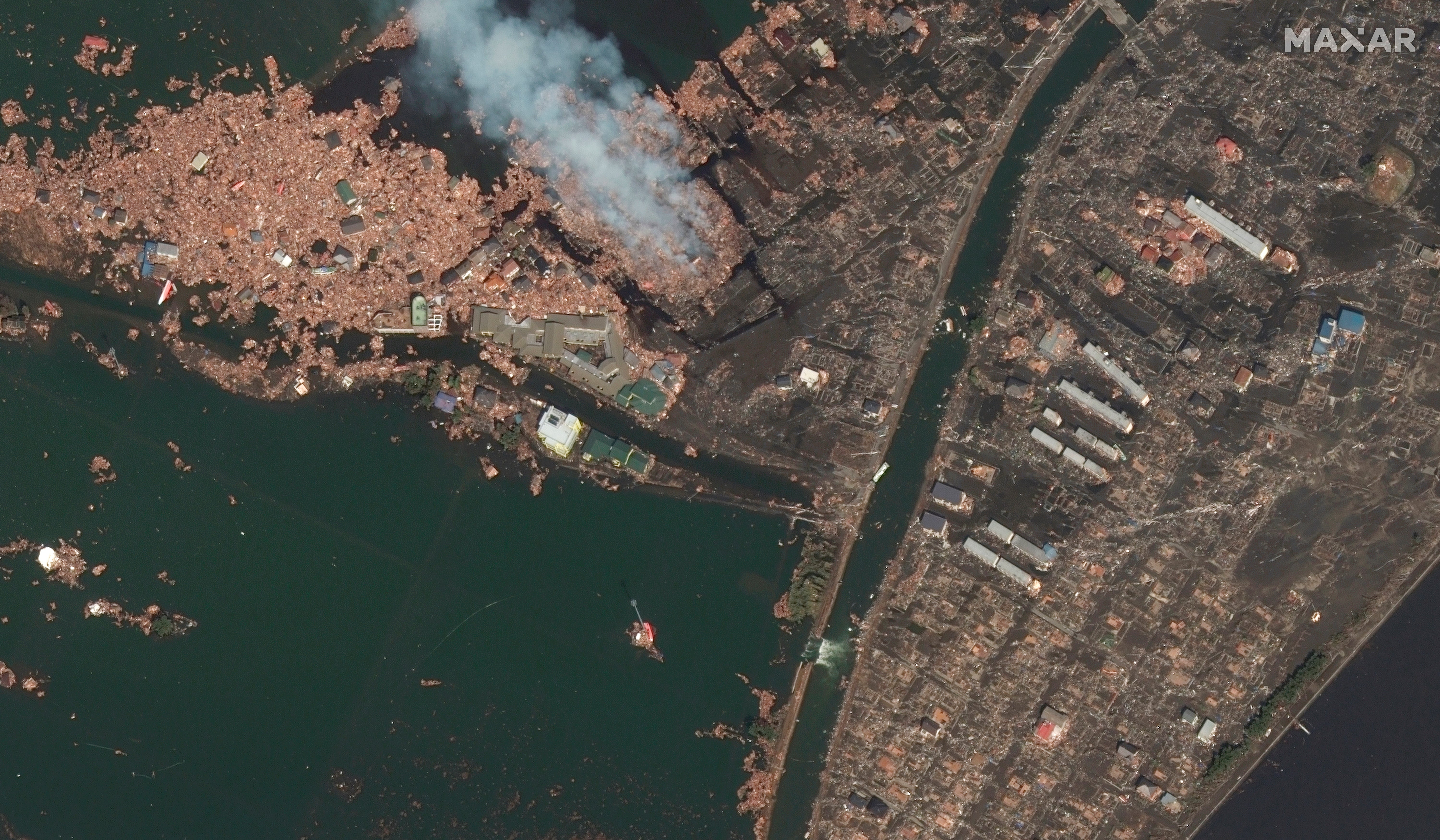Japan's recovery from tsunami disaster, by the numbers
Numbers show how much progress has been made and what still remains 10 years after the triple disaster of an earthquake, tsunami and nuclear plant meltdown on Japan's northeastern coast

Your support helps us to tell the story
From reproductive rights to climate change to Big Tech, The Independent is on the ground when the story is developing. Whether it's investigating the financials of Elon Musk's pro-Trump PAC or producing our latest documentary, 'The A Word', which shines a light on the American women fighting for reproductive rights, we know how important it is to parse out the facts from the messaging.
At such a critical moment in US history, we need reporters on the ground. Your donation allows us to keep sending journalists to speak to both sides of the story.
The Independent is trusted by Americans across the entire political spectrum. And unlike many other quality news outlets, we choose not to lock Americans out of our reporting and analysis with paywalls. We believe quality journalism should be available to everyone, paid for by those who can afford it.
Your support makes all the difference.Ten years after a massive earthquake and tsunami devastated Japan’s northeastern coast, triggering meltdowns at the Fukushima nuclear power plant, much has been achieved in disaster-hit areas but they are still recovering. Numbers show how much progress has been made and what still remains.
___
9.0 EARTHQUAKE
The magnitude 9.0 earthquake was one of the strongest temblors on record. It struck off the coast at 2:46 p.m. and generated a towering tsunami that reached land within half an hour.
___
18,426 DEAD
The National Police Agency says 18,426 people died, mostly in the tsunami, including 2,527 whose remains have not been found. Local authorities still regularly conduct searches in the sea and along the coast for traces of those still missing. None of the fatalities has been directly linked to radiation.
___
42,500 PEOPLE HAVEN'T RETURNED
Nearly half a million people were displaced across the northeastern region. Ten years later, 42,565 people, including 35,725 from Fukushima, still haven’t been able to return home.
___
$295 BILLION COST
The government has spent 32 trillion yen ($295 billion) for the region's recovery, including construction of roads, seawalls and houses, and support for people's livelihoods. In addition, Tokyo Electric Power Co. the operator of the destroyed nuclear plant, says its costs for decommissioning, compensating evacuees and decontamination of radioactive materials outside the plant will total 21.5 trillion yen ($200 billion), though analysts say it could be much higher.
___
2.4% OFF-LIMITS
A decade after the disaster, no-go zones remain in nine Fukushima municipalities surrounding the wrecked nuclear plant. The area accounts for 2.4% of prefectural land, down from more than 10% in the initial no-go zone. Decontamination efforts, such as the removal of topsoil and tree branches and the washing down of roofs, helped reduce radiation levels. But many residents are reluctant to return because of a lack of jobs and continuing radiation concerns.
___
14 MILLION TONS OF RADIOACTIVE WASTE
About 14 million tons of radioactive soil, trees and other waste from decontamination efforts across Fukushima are packed in massive numbers of plastic waste bags piled at temporary storage sites. The bags, enough to fill 11 enclosed baseball stadiums, are now being transported to a medium-term storage facility being built in the two towns that are home to the Fukushima nuclear plant. The government has promised to remove the bags from the prefecture in 30 years, but a final repository has not been determined.
___
432 KILOMETERS (270 MILES) OF SEAWALL
Much of Japan s northeastern coastline hit by the tsunami has been fortified with enormous concrete seawalls as high as 15 meters (50 feet). All of the walls have been completed except for sections of the eastern coast of Fukushima. When completed, the total length will be 432 kilometers (270 miles). Critics say the walls look like giant fortresses and block sea views, while posing a possible risk of preventing water from flowing back to sea if they are breached by a future tsunami.
___
4,000 NUCLEAR PLANT WORKERS
About 4,000 workers are employed every day at the damaged nuclear plant to help in its decommissioning, which officials say will take up to 40 years, a target critics say is overly optimistic. They are removing spent fuel rods from cooling pools, reinforcing a seawall to protect from future tsunamis, treating radioactive cooling water leaking from the reactors and removing highly contaminated debris.
___
1.24 MILLION TONS OF RADIOACTIVE WATER
Since the disaster, contaminated cooling water has leaked from the damaged reactor containment vessels into the basements of reactor buildings, where it mixes with groundwater. Much of the water is treated and stored in 1,000 huge tanks now crowding the plant. The operator, TEPCO, says the tanks currently contain 1.24 million tons of water and will be full in the fall of 2022. It says the water and tanks need to be removed to make room for facilities needed in the decommissioning process.